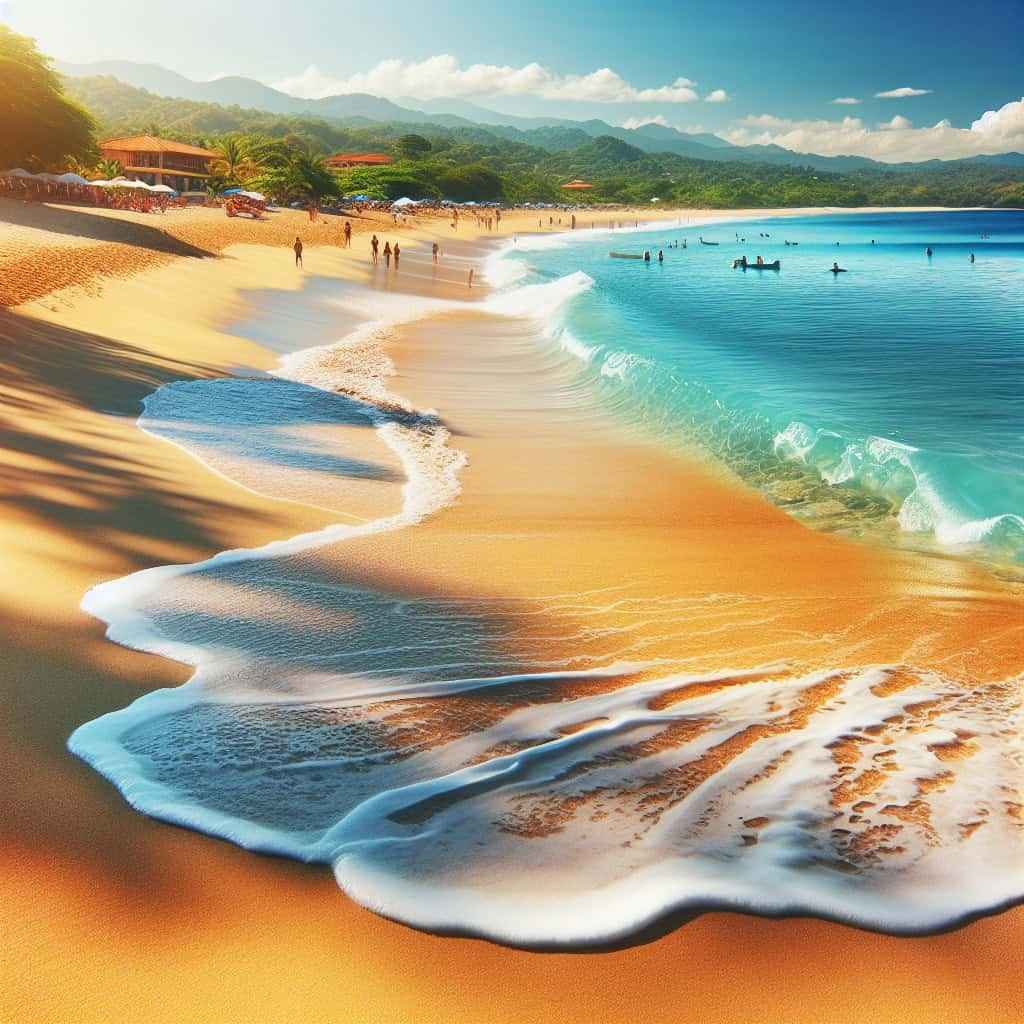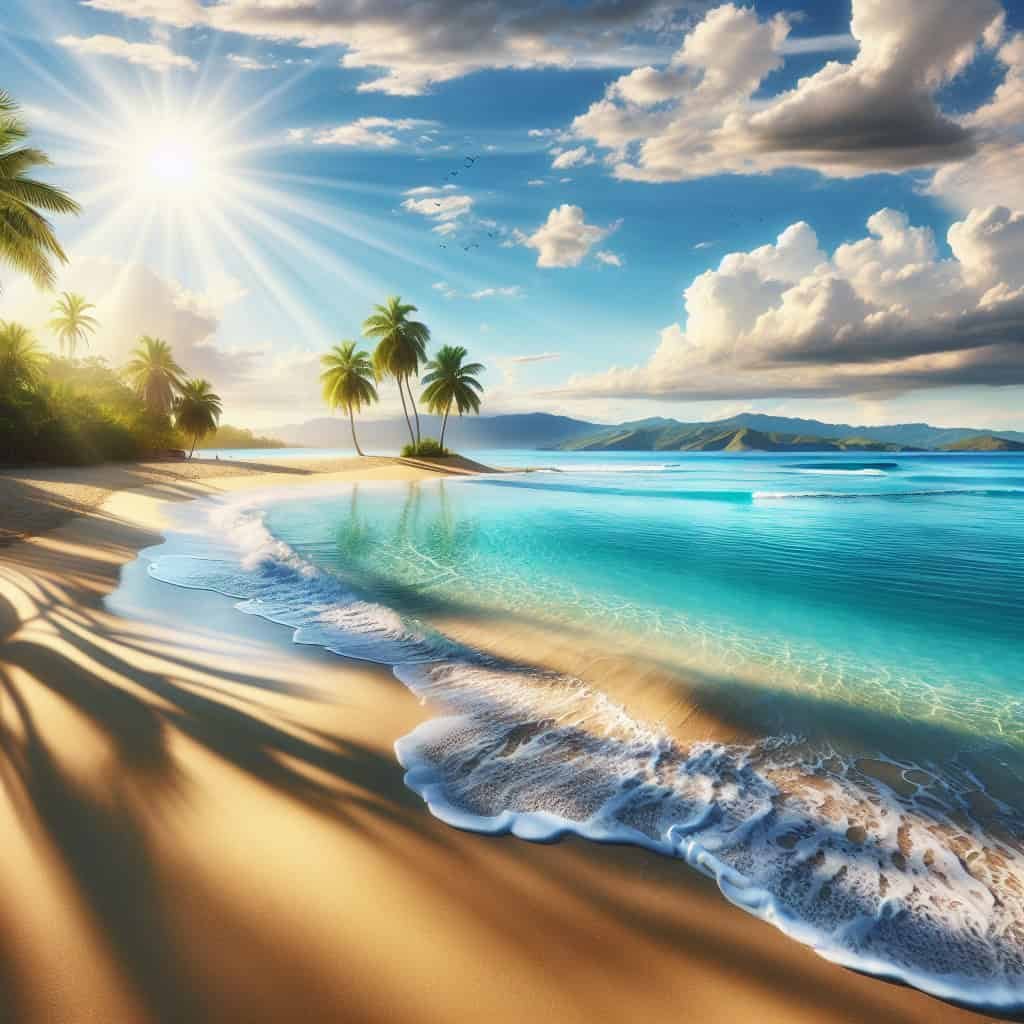If you’re looking for the perfect beach getaway, look no further than Nicaragua. With its pristine coastline and stunning tropical landscapes, it’s no wonder why this Central American paradise is becoming a popular destination for beach vacations. But when is the best time to visit? From sunny weather and calm waters to vibrant festivals and cultural celebrations, this article will guide you through the different seasons and help you decide which time of year is ideal for your beach escape in Nicaragua. So grab your sun hat and sunscreen, because an unforgettable beach vacation awaits you in this tropical haven.

Dry Season
December – February
The dry season in Nicaragua begins in December and extends through February. This is considered the peak tourist season as the weather is warm and dry, making it the perfect time for a beach vacation. During these months, you can expect clear skies, gentle breezes, and plenty of sunshine. It’s ideal for lounging on the beach, swimming in the crystal-clear waters, and indulging in water sports like snorkeling or kayaking. Be sure to bring your sunglasses and sunscreen to protect yourself from the strong sun rays.
March – April
March and April mark the end of the dry season in Nicaragua. While the weather may be slightly hotter during this time, it is still a great time to visit for beach vacations. The temperatures are pleasantly warm, and you can enjoy the beaches without the high season crowds. This is a fantastic opportunity to soak up the sun, take long walks along the sandy shores, and fully relax in a tranquil beach setting. Don’t forget to stay hydrated and wear a hat to shield yourself from the intense sun.
May – June
May and June transition Nicaragua into the rainy season, but there are still many days of dry weather during this time. The temperatures remain pleasant, making it a good time for beach vacations. However, it is essential to stay updated with the weather forecast as rain showers can be unpredictable. During May and June, the beaches are generally quieter, allowing you to have a more serene and intimate beach experience. Pack a rain jacket, just in case, and embrace the opportunity to explore the stunning coastline when the weather permits.
Rainy Season
July – September
The rainy season in Nicaragua officially begins in July and extends through September. During this period, the country experiences regular rain showers, which can sometimes be heavy. While the rainy season may deter some travelers from visiting, it can be an exciting time for beach vacations if you don’t mind getting a little wet. The rainforests surrounding the beaches are lush and vibrant, creating a beautiful backdrop for your seaside adventures. Just be prepared with rain gear and consider indoor activities or exploring nearby towns during heavy rain periods.
October – November
October and November are also part of the rainy season in Nicaragua. Like the previous months, showers are common, but they can be intermittent. However, it’s worth noting that this time of year is considered the transition period between the rainy and dry seasons, so precipitation levels may start to decrease as November approaches. Despite the rain, this can be an excellent time for adventurous beach vacations, as the landscapes are incredibly green, and the waterfalls are flowing abundantly. Keep an eye on the weather forecast and embrace the opportunity to witness the lush beauty that emerges after the rain.
Temperature
November – February
During the months of November to February, Nicaragua experiences its cooler temperatures. The days are comfortable, with average temperatures ranging from the mid-70s to low 80s Fahrenheit (24-29 degrees Celsius), making it an ideal time to enjoy the beaches without feeling overly hot. The evenings can be slightly cooler, so it’s a good idea to bring a light jacket or sweater. These cooler temperatures make outdoor activities pleasant, whether you’re strolling along the beach or exploring the surrounding areas.
March – April
March and April are part of Nicaragua’s dry season, and the temperatures start to rise during this time. You can expect warmer days, with temperatures typically ranging from the low to mid-80s Fahrenheit (27-30 degrees Celsius). These comfortable and sunny conditions make it an ideal time to visit the beaches for swimming, sunbathing, and engaging in various water activities. Make sure to stay hydrated and protect your skin from the strong sun rays by applying sunscreen regularly.
May – October
From May to October, Nicaragua experiences its warmer temperatures. The days can get hot and humid, with average temperatures reaching the high 80s Fahrenheit (around 31 degrees Celsius) or even higher. This period falls within the rainy season, so the combination of heat and humidity can be intense. It’s crucial to take precautions to stay cool and avoid heat-related illnesses, such as drinking plenty of water, seeking shade, and wearing lightweight, breathable clothing. Despite the heat, the warm waters of the Pacific Ocean offer a refreshing escape for beachgoers.
Crowds
December – February
The months of December to February are the peak tourist season in Nicaragua. The pleasant weather and dry conditions attract a significant number of visitors, especially to the popular beach destinations. While this means that beaches may be slightly more crowded, there are still plenty of opportunities to find quieter spots and enjoy your beach vacation. Booking accommodations and tours in advance can help ensure you have a smooth and enjoyable trip during this busy period.
June – August
June to August marks another peak tourist season in Nicaragua, mainly due to the summer break for families and students. The beaches become livelier during this time, with more people enjoying their vacations. It’s important to note that popular beach destinations may be more crowded, and accommodations might fill up quickly. However, the upbeat and vibrant atmosphere can enhance your beach experience, as you have the opportunity to meet fellow travelers and participate in various beachside activities.

Pricing
April – November
From April to November, Nicaragua experiences its low season, making it an excellent time to visit if you’re looking for more affordable prices. During these months, accommodations, flights, and tours often offer discounted rates to attract visitors. Take advantage of these lower prices to plan your beach vacation without breaking the bank. While the weather may include occasional rain showers, there’s still plenty of sunshine and enjoyable beach days to be had, and you’ll have more room to relax and explore without feeling crowded.
December – March
December to March falls within Nicaragua’s high season, and prices tend to be higher during this time. The peak tourist season attracts more visitors, leading to increased demand for accommodations and other travel services, resulting in higher prices. If you’re planning a beach vacation during these months, it’s advisable to book in advance to secure the best prices and availability. Despite the higher costs, the dry weather and pleasant temperatures make it a popular time to visit and enjoy the stunning Nicaraguan beaches.
Activities
December – April
From December to April, Nicaragua offers a wide range of activities for beach vacationers. The dry season provides optimal conditions for various water sports, including kayaking, paddleboarding, and jet skiing. Snorkeling and diving enthusiasts can explore the vibrant marine life and colorful coral reefs. Beach walks, sunbathing, and sunset watching are popular activities for those seeking relaxation. Additionally, many beach resorts and towns organize cultural events and entertainment during these months, allowing visitors to immerse themselves in the local culture while enjoying the coastal scenery.
May – November
The months between May and November offer a different set of activities for beach vacationers in Nicaragua. While occasional rain showers are possible, there are still plenty of sunny days to enjoy outdoor adventures. The lush green landscapes provide an ideal backdrop for hiking and nature walks, allowing you to appreciate the country’s diverse flora and fauna. Exploring nearby waterfalls and taking leisurely boat rides along the rivers are other enjoyable activities during this time. Beachcombing and bird watching are also popular pastimes, allowing you to connect with nature in a serene setting.

Surfing
March – November
Nicaragua boasts incredible surfing conditions, attracting surfers from around the world. From March to November, the country experiences consistent waves, making it a paradise for surf enthusiasts. Whether you’re a beginner or an experienced surfer, Nicaragua offers a variety of breaks suitable for all levels. The Pacific coast is dotted with surf spots that provide challenging waves for advanced surfers and gentle swells for beginners. Additionally, the warm water temperature throughout the year adds to the appeal of surfing in Nicaragua. Grab your board and catch the perfect wave in this surfer’s paradise.
Turtle Nesting
July – December
Nicaragua is home to several species of sea turtles, and witnessing their nesting season can be a remarkable experience. From July to December, these magnificent creatures come ashore to lay their eggs on the beaches of Nicaragua. Playa La Flor, located in the Rivas region, is a popular nesting site where visitors can witness this awe-inspiring event. Strict conservation measures are in place to protect the turtles, and there are guided tours available to ensure the experience is respectful and educational. Witnessing baby turtles hatch and make their way to the ocean is a heartwarming sight that shouldn’t be missed.

Festivals and Events
January – February
January and February are vibrant months in Nicaragua, with various festivals and events taking place. The country celebrates its rich cultural heritage with colorful parades, traditional dances, and mouthwatering culinary delights. The San Sebastian Festival in Diriamba and the Palo de Mayo Festival in Bluefields are two prominent events during this time. These festivals showcase the country’s traditional music, dance, and folklore, providing a unique opportunity for visitors to immerse themselves in Nicaraguan culture while enjoying the beautiful beaches.
April – May
April and May bring another wave of festivals and events to Nicaragua. The Semana Santa (Holy Week) celebrations are particularly significant, with religious processions and reenactments taking place across the country. The city of León hosts the El Güegüense festival, a UNESCO recognized event that features traditional theater and dance performances. These festivals offer a chance to experience the cultural richness of Nicaragua and make your beach vacation even more memorable.
December
December marks the start of the festive season in Nicaragua, and the country comes alive with holiday spirit. From lively Christmas parades to vibrant New Year’s Eve parties, there are numerous events to enjoy during this time. Visiting the coastal towns during December allows you to experience the unique fusion of holiday traditions with the beach ambiance. Keep an eye out for local events and celebrations, as each town adds its own touch to the festive atmosphere.
Natural Disasters
September – November
While Nicaragua is a beautiful and inviting destination, it’s important to be aware of the potential for natural disasters, especially during the months of September to November. This period coincides with the peak of the rainy season and the possibility of tropical storms or hurricanes. It’s crucial to stay informed about weather conditions and heed any warnings or advice from local authorities. If you’re planning a beach vacation during this time, consider purchasing travel insurance that includes coverage for trip interruptions or cancellations due to natural disasters. It’s always better to prioritize your safety and make necessary adjustments to your travel plans when faced with potential risks.

